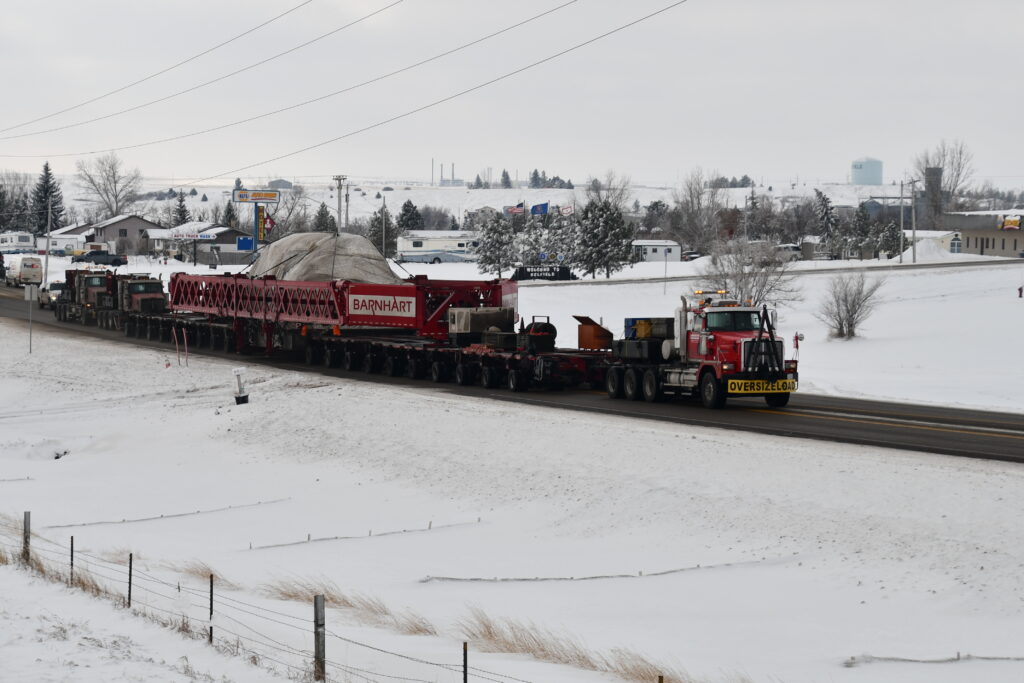HEAVY HAUL: MINNESOTA TO MOOSE JAW
When Barnhart recently transported a turbine and generator from Duluth, Minnesota to Moose Jaw (real name) in Saskatchewan, Canada, heads turned. After all, when a transporter nearly a football field long crawls down a highway, it gets noticed.
The length was needed to handle components that were both heavy and long. Additionally, the transporters also had to distribute the weight, so as not to exceed road weight limits.
The generator itself weighed 343,811 pounds. It was pulled and guided by two prime movers and transported on a 13-line Eastrac trailer. The weight of the entire convoy was 642,144 lbs. It was 210’4” long, 16’ wide and 14’5” tall.
The generator followed a 2000-mile route through Minnesota, South Dakota, Montana and across the border 120 miles into Canada to a power plant in Moose Jaw. The transporter and crew traversed the mountains of Montana, encountered winter conditions, and kept going. After two weeks, they reached their destination.

The 390,218-pound turbine was transported separately. Three prime movers, two 10-line Eastrac trailers and a GS-800 Dreamliner were needed to handle to load. The gross vehicle weight of the transport was 976,800 lbs. It was 344’10” long, 24’10 wide, and 18’6” tall and had 36 axles.
The turbine took a three-week trek that was 1800 miles through Montana, South Dakota, North Dakota, Montana and into Canada. Along the way, the crew battled the snow and extreme terrain of the Midwest and customs in order to cross the border before the “real” winter set in.
The journey was covered on social media from several sources, including the North Dakota Highway Patrol. The site of a load so wide it spanned a two-lane highway – white line to white line – elicited plenty of comments.
“Logistics, logistics, logistics,…This here is a huge team effort…”
“I love, love, love seeing these monster loads and the fantastic planners, drivers and support work together.”
Well said and true. Planning and logistics took several months and required coordinating with local and state DOTs, highway patrols, several counties and cities, and utility companies to prepare and navigate the routes.
See it for yourself in the following video.
